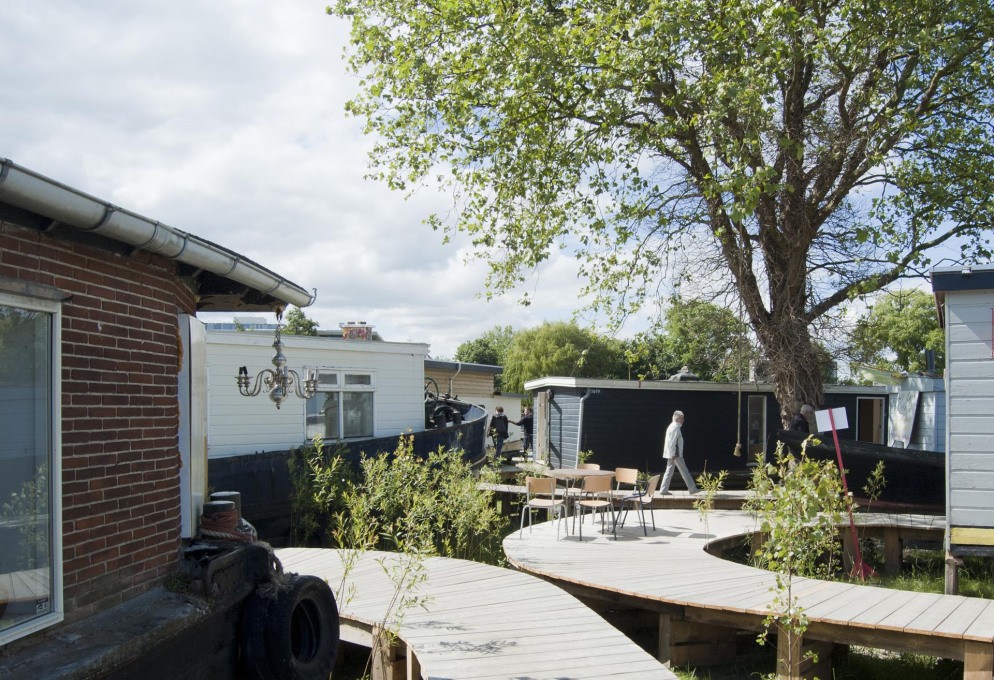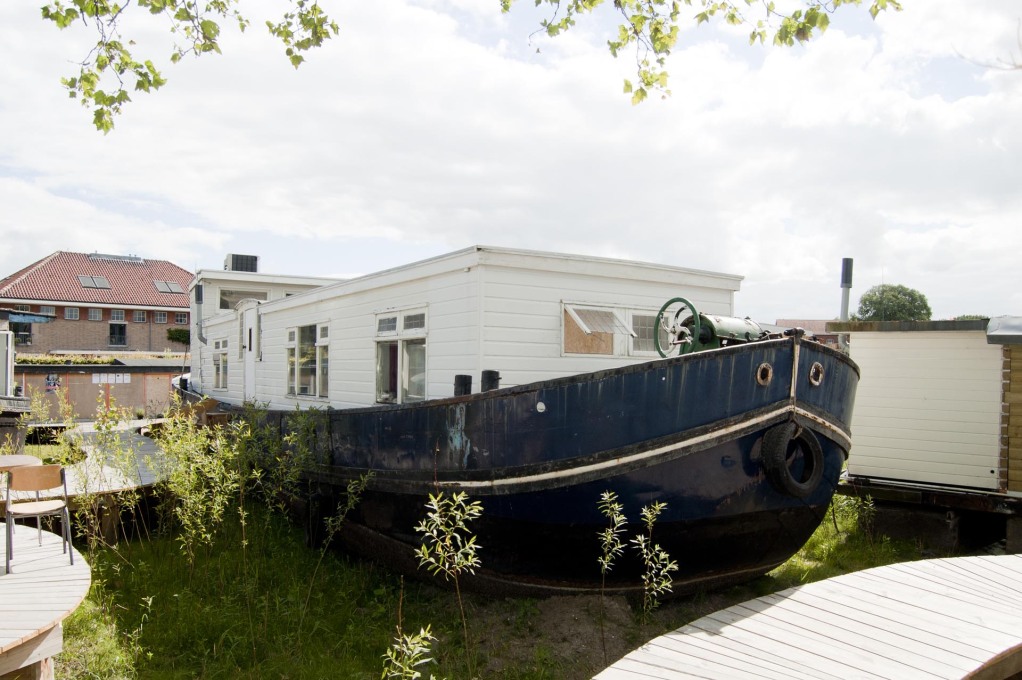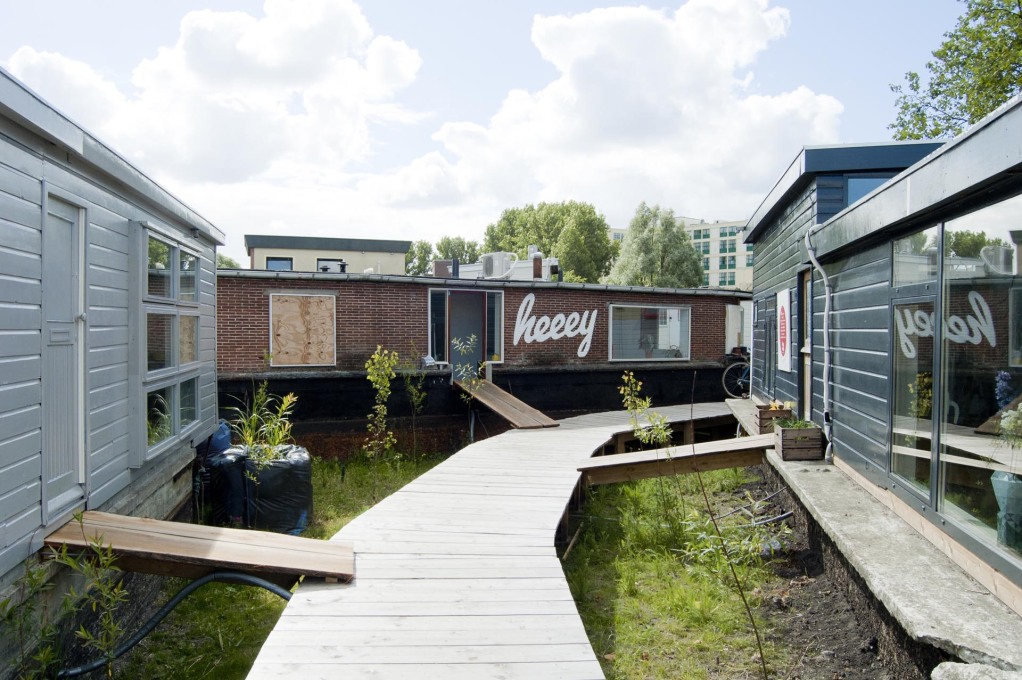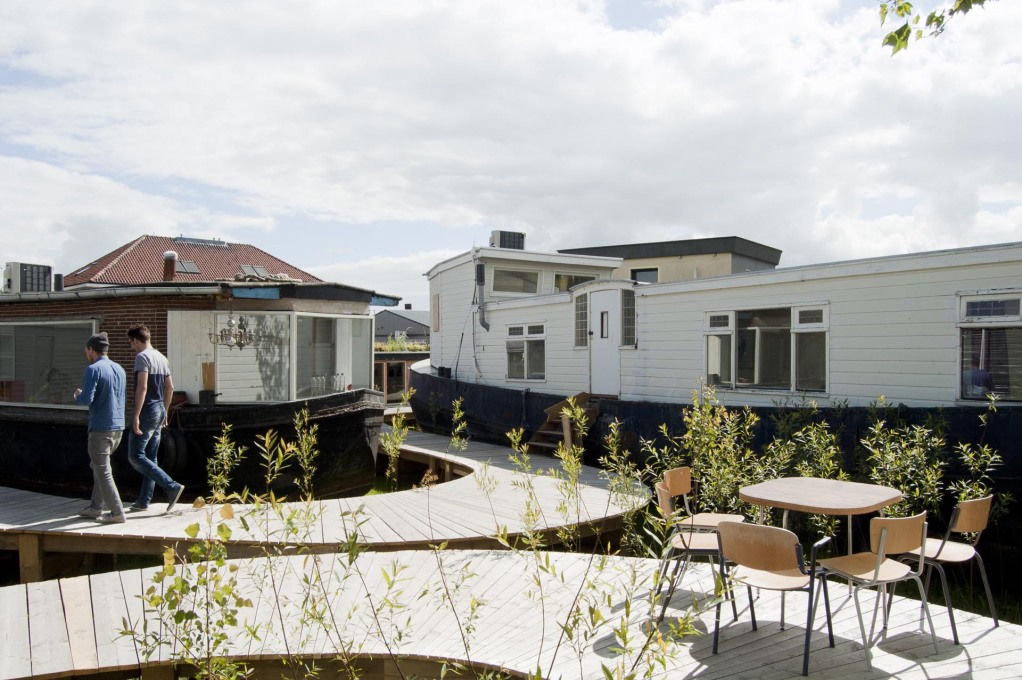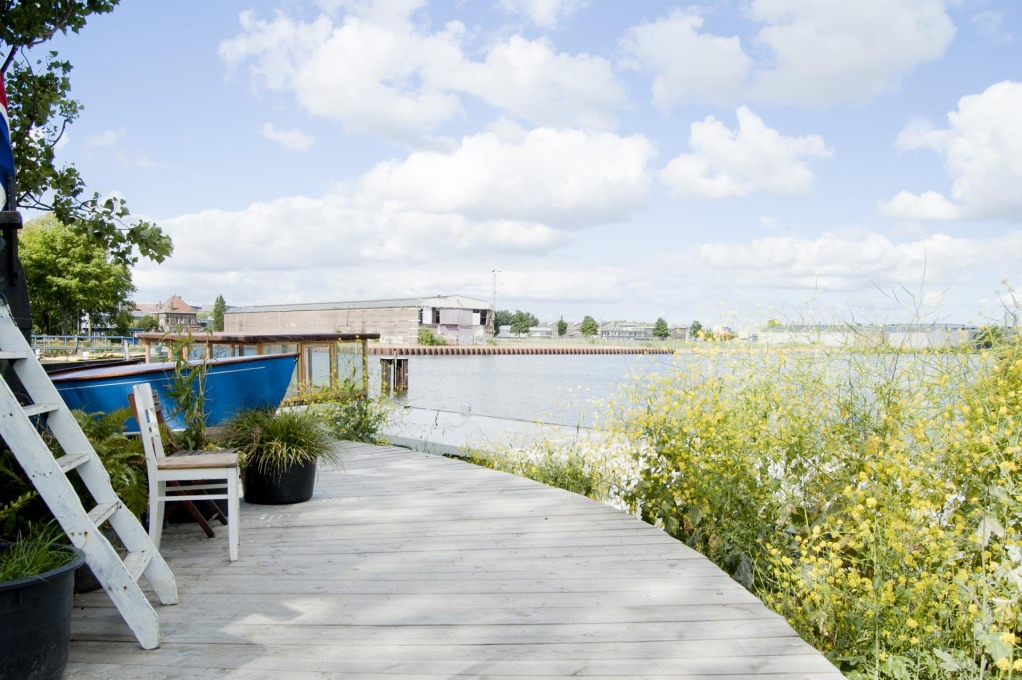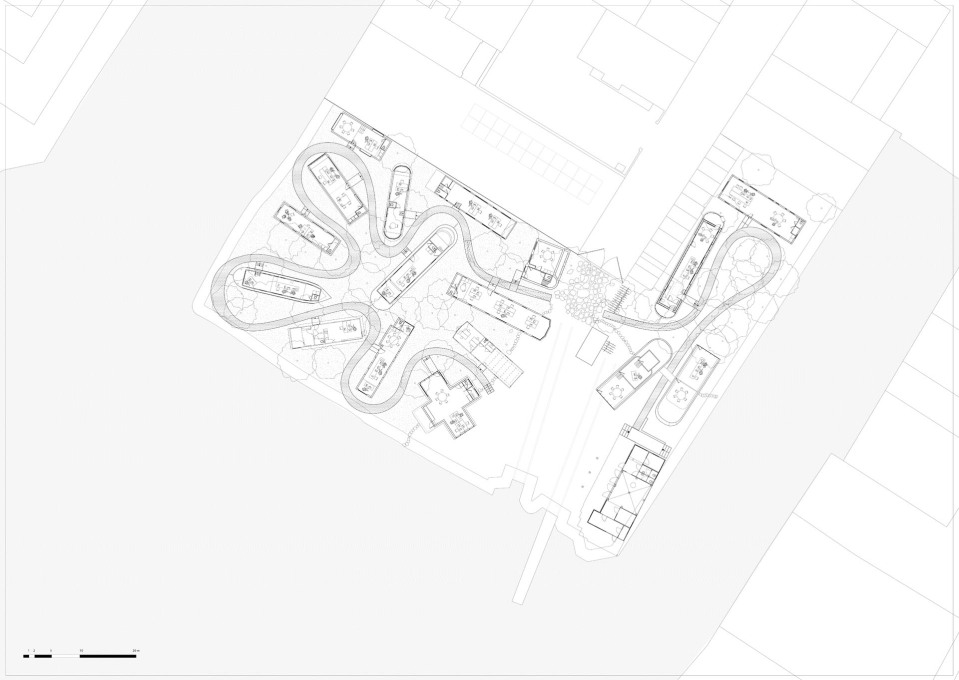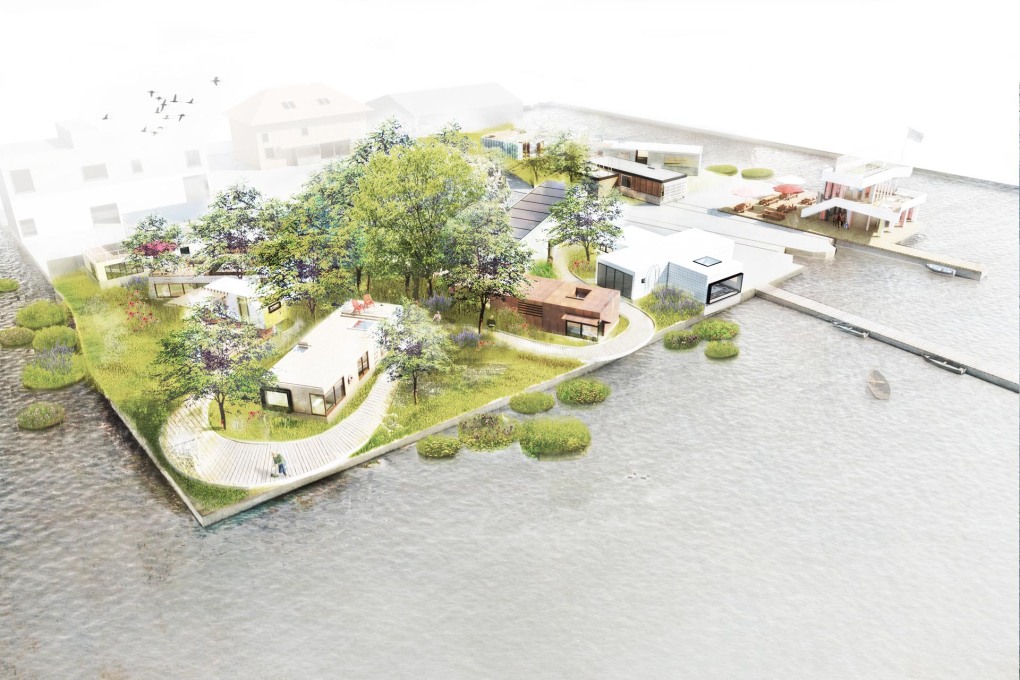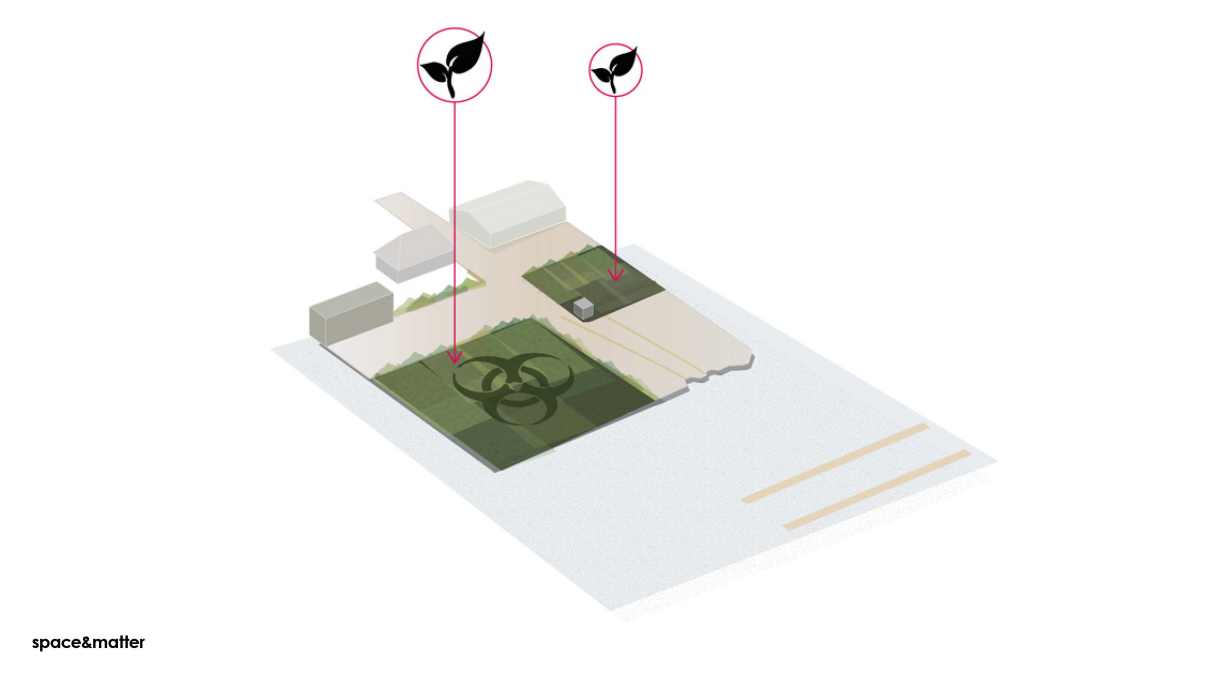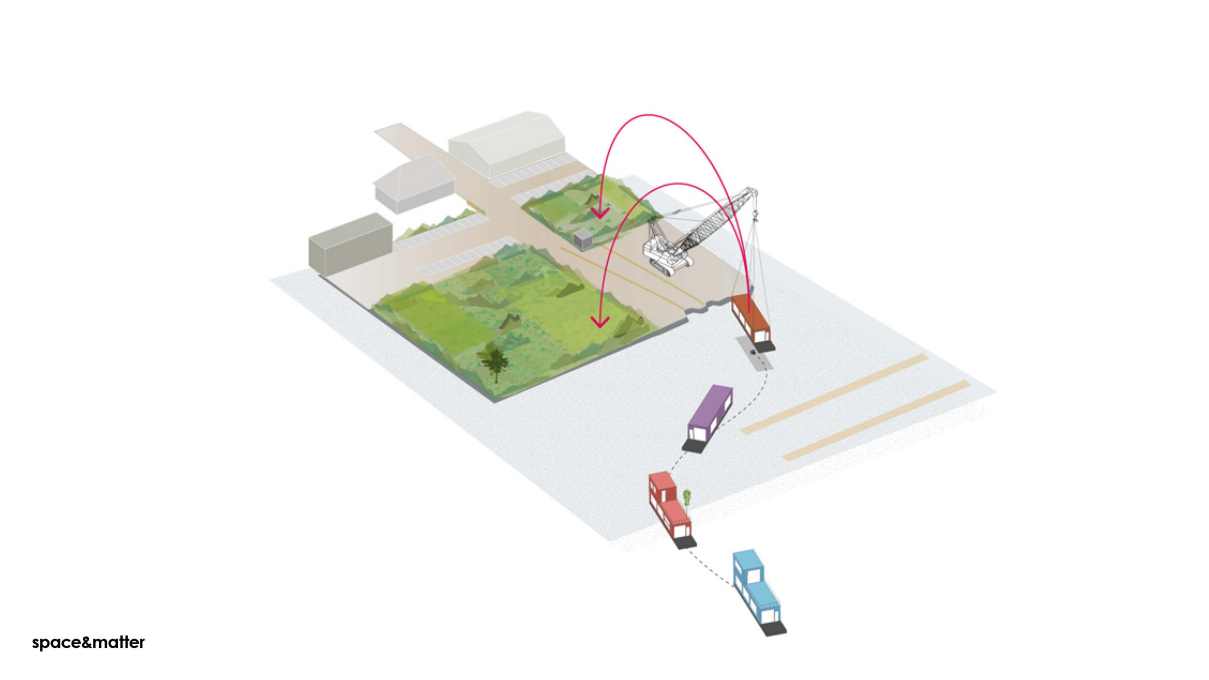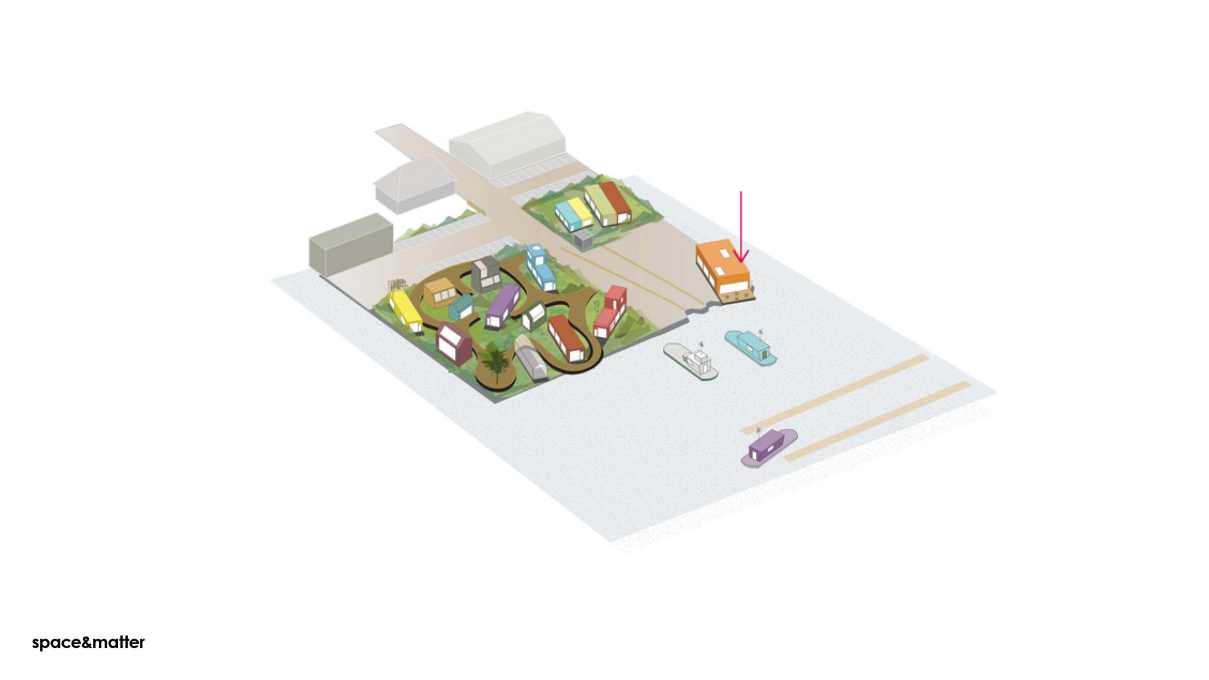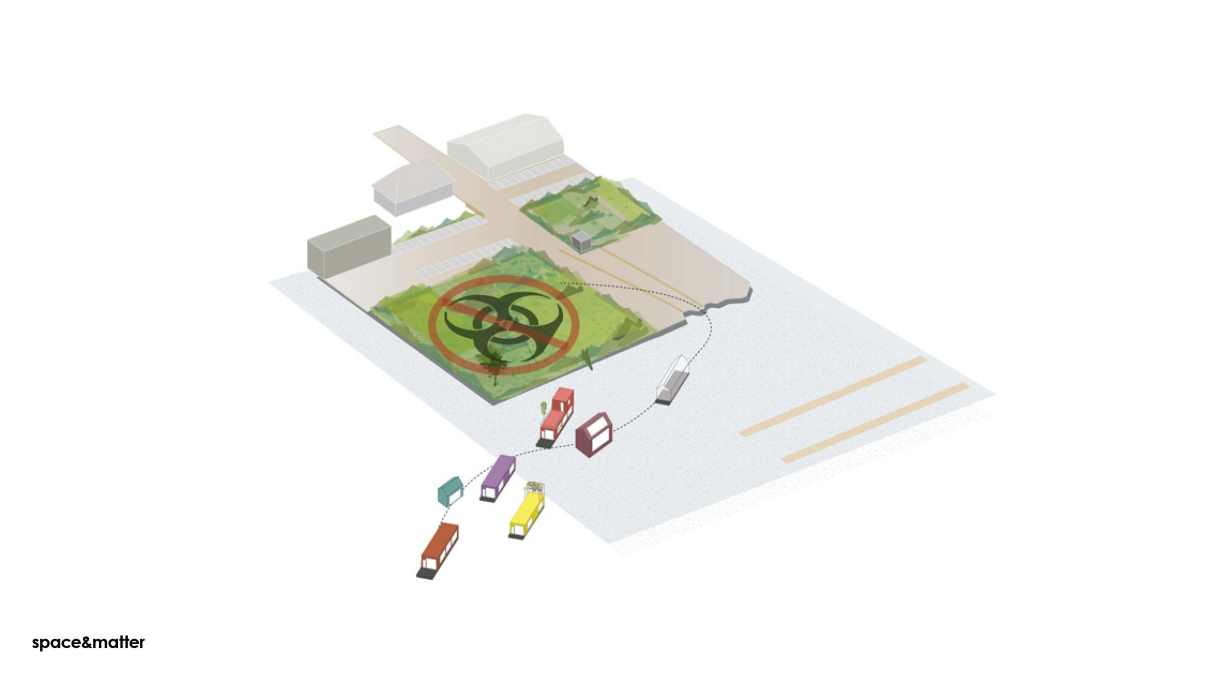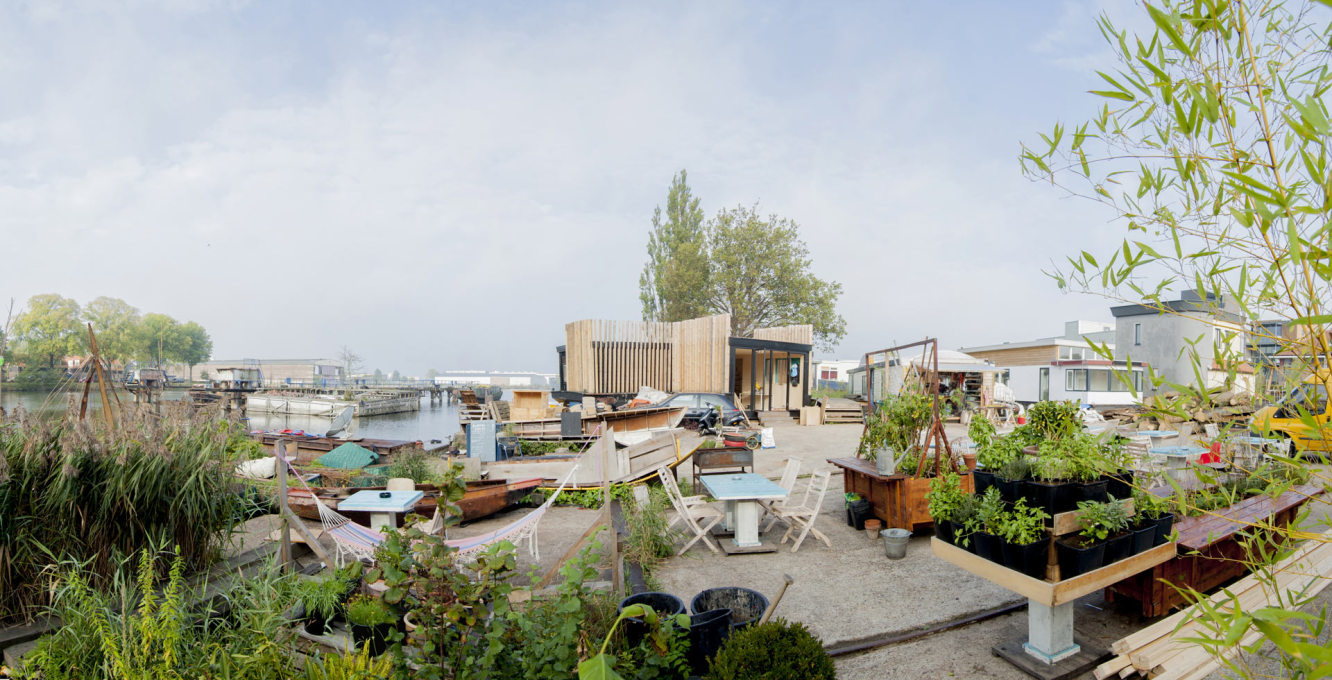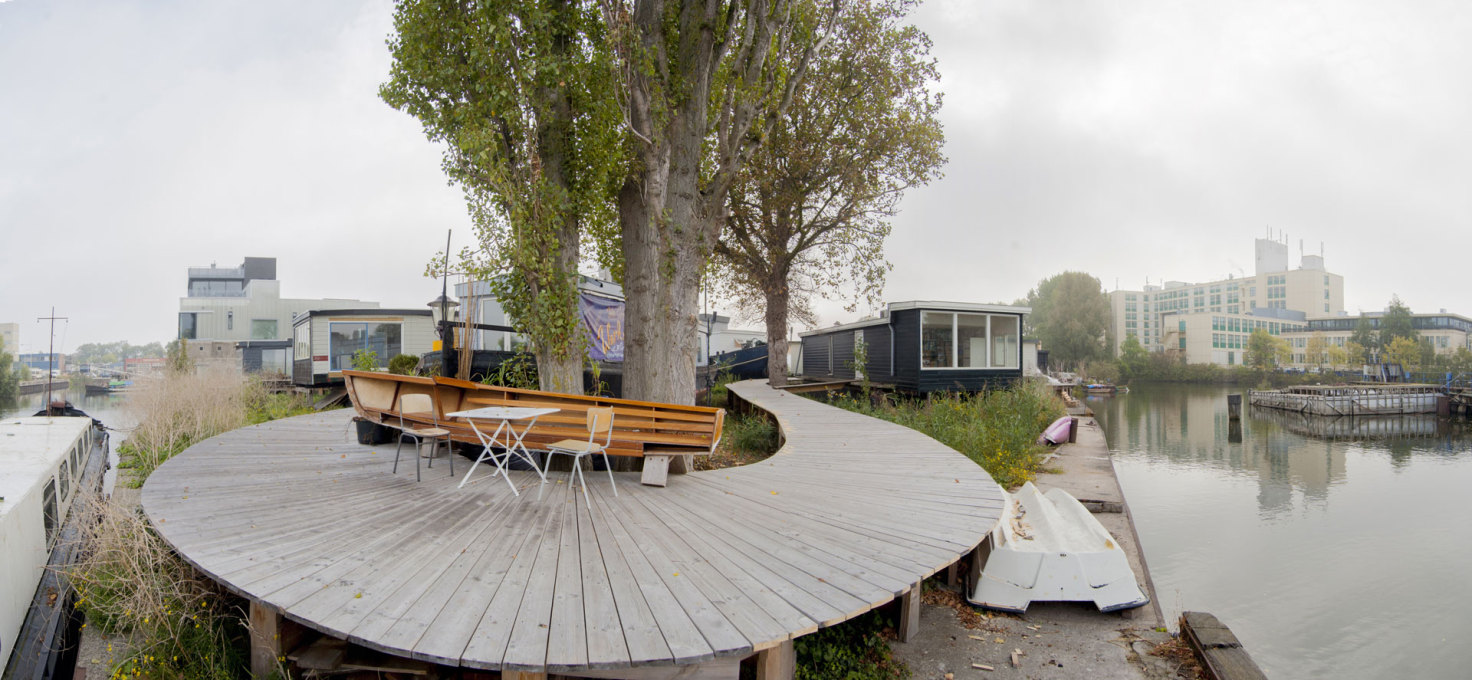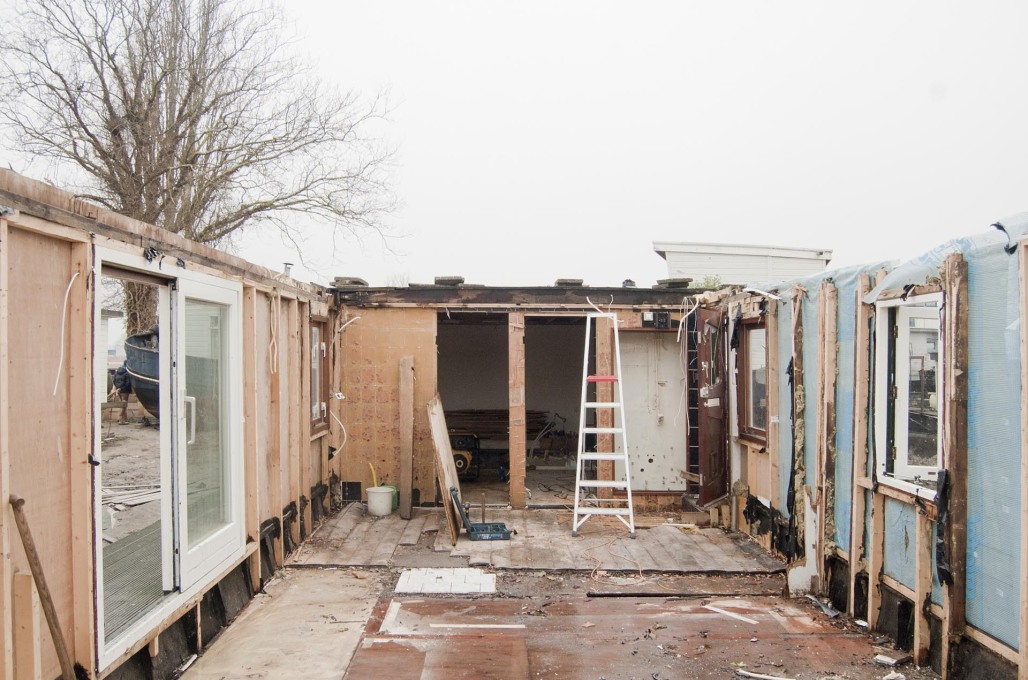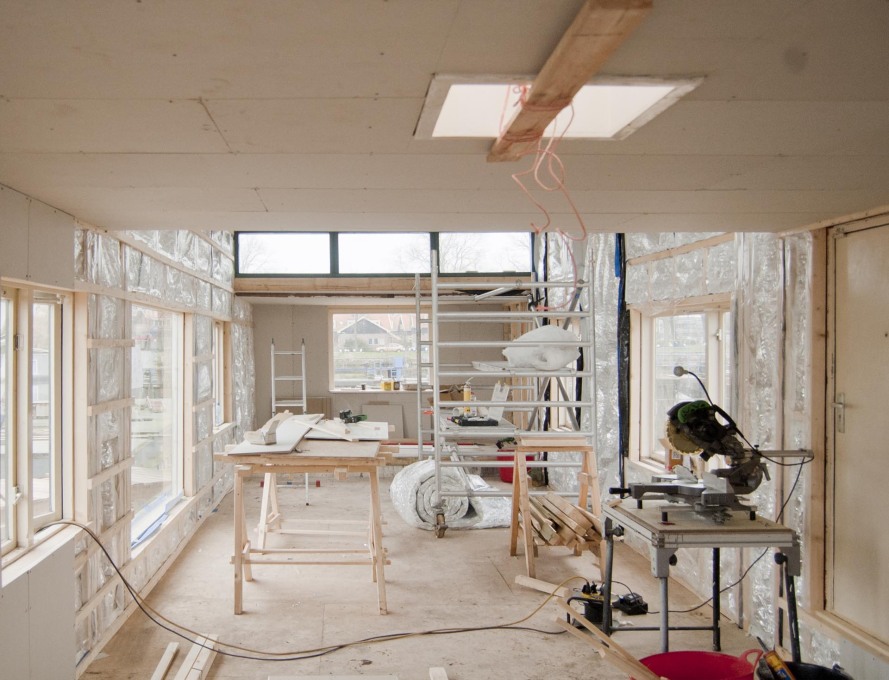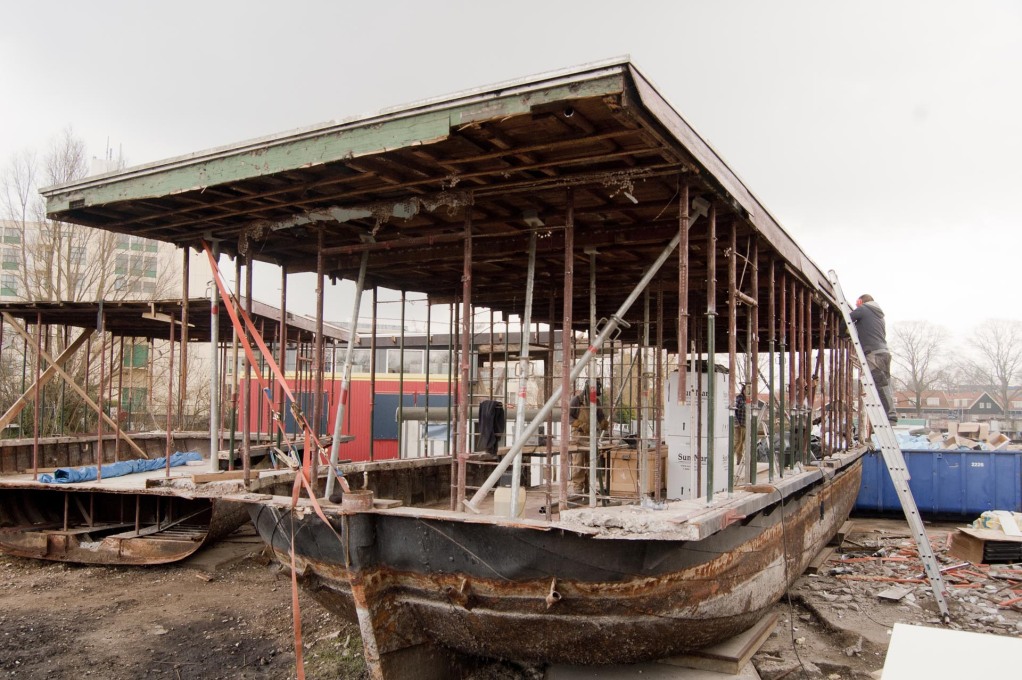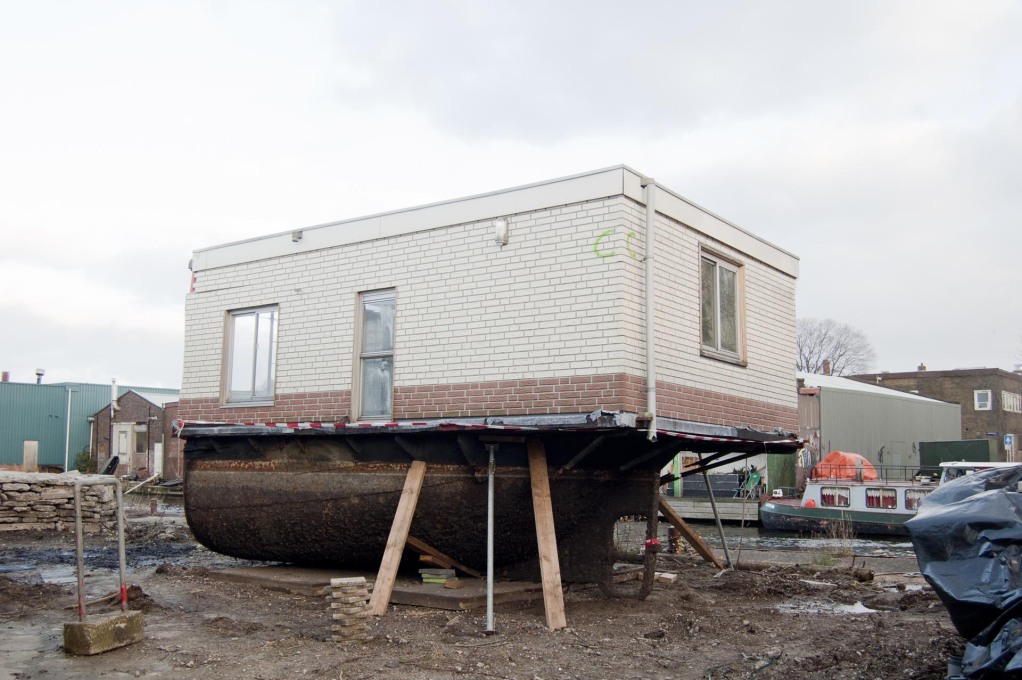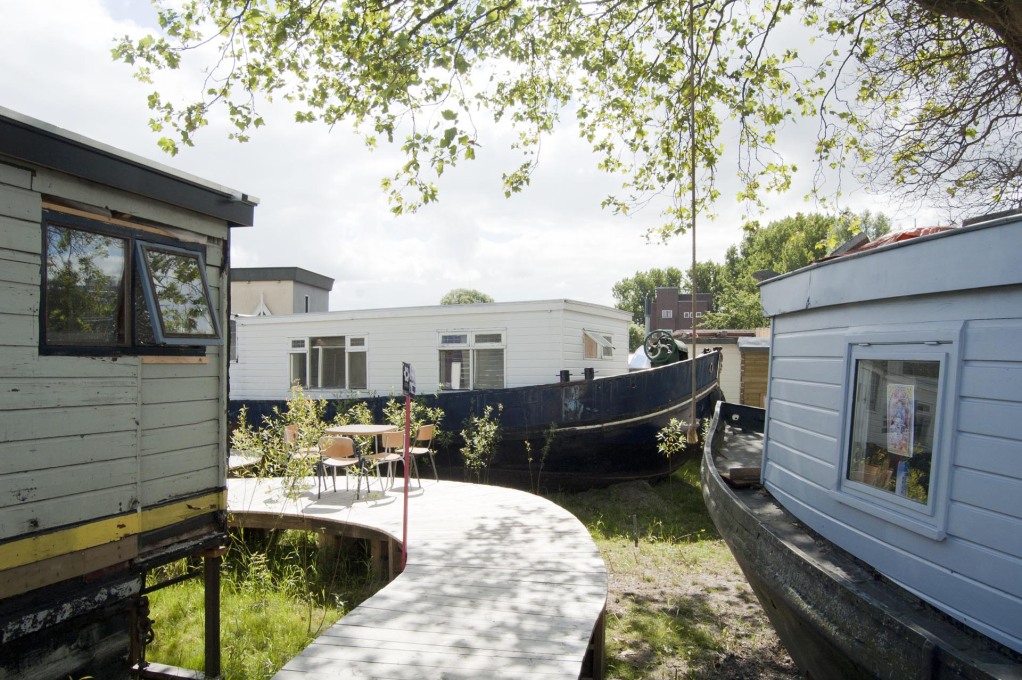De Ceuvel‚ a beached boat community in Amsterdam‚ is sailing through red tape and conventions to become a successful commercial city attraction that marks the way forward for more people-centric planning, says uncube correspondent Jason Hilgefort.
In 2012‚ the City of Amsterdam offered a challenging call for development proposals for a 4‚470 m2 piece of waterfront land. The plot was offered for free‚ but with a series of caveats: it was only available for ten years and had to be a clear site at the end of that time‚ it could not include housing‚ it must attract the endlessly desirable “creative” crowd‚ and its polluted soil needed to be cleaned. This meant the winning pitch had to be innovative on environmental‚ economical, and construction fronts simultaneously.
space&matter‚ along with Marjolein Smeele‚ offered an ideal concoction for the solution of the project‚ which has come to be called De Ceuvel. Their first move was to allow the landscape to do a lot of the dirty work. Carefully selected plants absorbed and broke down pollutants in the contaminated soils in a process known as phytoremediation‚ while a series of lo-tech biofilters cleaned up the discharged water and sewage. Costs were drastically cut by collecting and reusing old houseboats from the Amsterdam canals (which are commonly discarded in favour of newer models) for the buildings.
Many time-consuming‚ red tape permit issues were avoided by refurbishing the boats on the water (no permit necessary to do so) and then hauling them on site afterwards. To both formally and functionally bind these diverse boats moored on dry land‚ a 450 m2 raised wooden walkway was added. It allows for pedestrian access without disturbing the cleansing plants or the provision of water and power to the units. These simple yet innovative steps of the De Ceuvel project are good examples of architecture’s potential for designing problem-solving strategies beyond the traditional bounds of the profession.
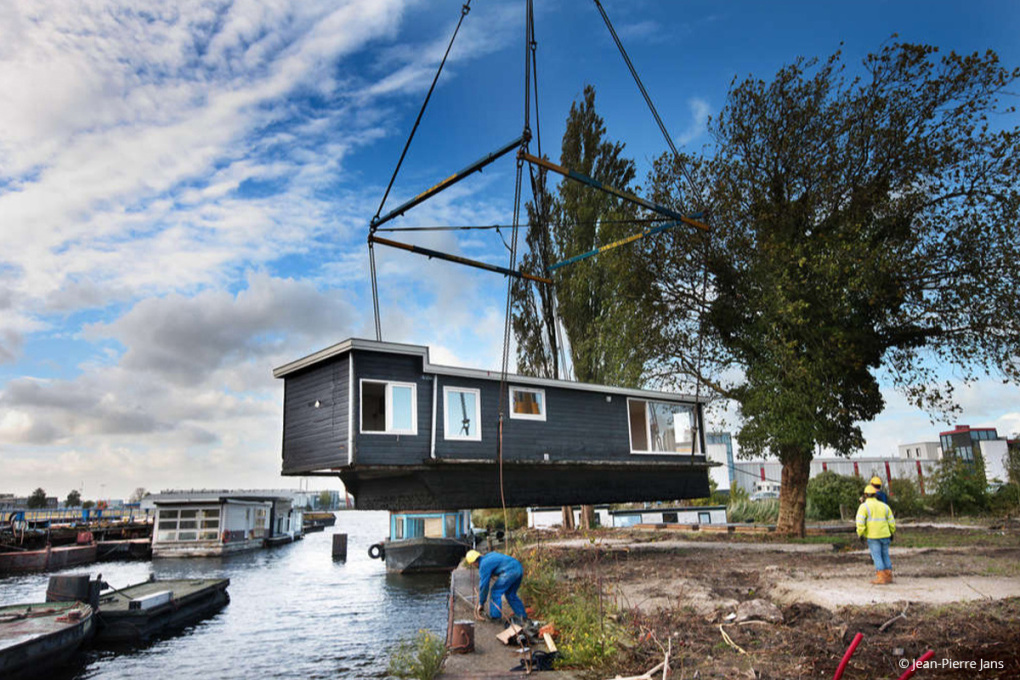
The project is also indicative of a growing trend in our cities. Places such as Amsterdam used to be a draw to citizens because of their historic building fabric. Now most of the hot spots in Amsterdam (NDSM campus‚ Hannekes Boom‚ Roest, etc.) are not within the polished‚ museum-like centre‚ but located in the rough edges of the city instead. They do not represent the anti-city‚ but suggest a new notion of city – one less formal and more people focused‚ where event spaces are programmed alongside bars‚ restaurants and ateliers. These special places happen in cities where the local government administration knows how to foster innovation and when to look the other way with certain regulations.
Today the site hosts ten creative industries‚ three commercial spaces‚ an event space and a restaurant. In many ways‚ the café has become the centre of the project. Simple snacks and drinks are on offer for consumption while taking in the sun atop the battered concrete waterfront and sitting on a scattering of ad-hoc seats and chairs. Being only 15 minutes from the central station‚ it has drawn many newcomers to engage with the site and what it stands for. It can be seen as a new concept for urban workspaces in that it temporarily activates under-utilised land‚ with users that are being priced out of the city centre and all the while slowly cleans the damaged landscape with no danger to its inhabitants. There is a raw efficiency to its design and its functions‚ yet it provides a truly unique place: one where scenarios, such as the one I encountered the other day, of a naked wood-whittling hippy sitting on the boardwalk waving a familiar greeting to a suit-clad individual kayaking up to the wharf for an after-work designer beer and pizza, can seem the most natural thing in the world.
– Jason Hilgefort is the founder of Land+Civilization Compositions.
www.landandcc.com
spaceandmatter.nl
smeelearchitecture.com




